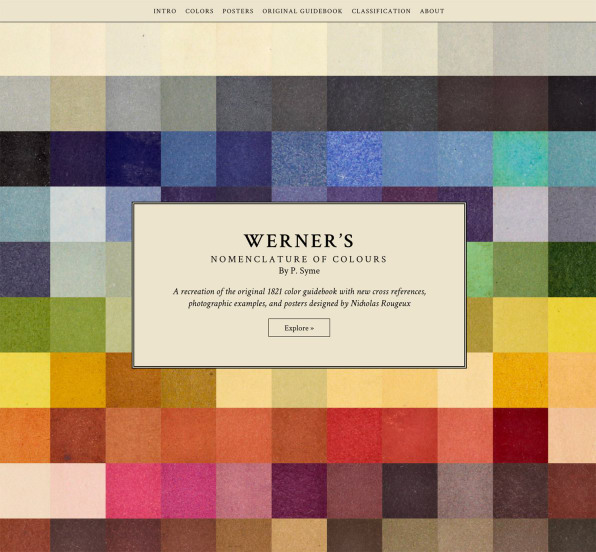The nomenclature of colors we use today is really a machine language–numerical hex codes crafted to communicate with software on computers and printers. Before the age of CMYK and RBG, though, artists and scientists created their own languages for talking about and categorizing color. Though many have fallen into obscurity, at least one is now accessible to anyone with access to the internet: Werner’s Nomenclature of Colours.
Published in 1814 by the painter Patrick Syme based on the work of geologist Abraham Gottlob Werner, Werner’s is a working dictionary of colors found in the natural world, complete with swatches and examples of animals, minerals, and vegetables where a particular hue could be found in the wild. The book was a work straight out of the early days of natural science–Darwin traveled with a copy, and used its definitions in his writings. Compared to the precise, computerized way color is defined today, Werner’s is less than practical, yet there’s something lovely about its definitions. You could find #2, or Reddish White, on the egg of a gray linnet, for instance, or the back of Christmas rose or in porcelain soil. Auricula Purple, #41, describes the eggs of a blue bottle fly. Look for #71, Straw Yellow, on the fur of a polar bear.
Werner's Nomenclature of Colours is here.










































































































































































No comments:
Post a Comment